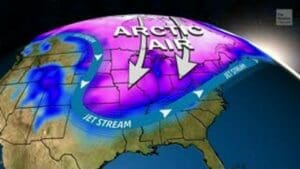 We are still 35 days away from winter, but more than 230 million people in the US feel like they are in the depths of the cold season already. Earlier this week, an arctic blast swept the eastern two-thirds of the country, plunging temperatures below freezing, breaking hundreds of cold temperature records. On Wednesday morning in Boston, we woke up to temperatures hovering around 18 degrees, with a wind chill of 5. The cold snap has wreaked havoc across the country, as the treacherous weather has resulted in numerous multi-car pile-ups, more than 150 flight cancellations, and at least 5 deaths so far. The good news is the arctic weather is heading out, and temperatures look to normalize over the next few days. It’s hard to wrap my head around weather this cold when we are still a few weeks away from Thanksgiving. And now, on to this week’s logistics news:
We are still 35 days away from winter, but more than 230 million people in the US feel like they are in the depths of the cold season already. Earlier this week, an arctic blast swept the eastern two-thirds of the country, plunging temperatures below freezing, breaking hundreds of cold temperature records. On Wednesday morning in Boston, we woke up to temperatures hovering around 18 degrees, with a wind chill of 5. The cold snap has wreaked havoc across the country, as the treacherous weather has resulted in numerous multi-car pile-ups, more than 150 flight cancellations, and at least 5 deaths so far. The good news is the arctic weather is heading out, and temperatures look to normalize over the next few days. It’s hard to wrap my head around weather this cold when we are still a few weeks away from Thanksgiving. And now, on to this week’s logistics news:
- Alibaba spends $3.3b to raise stake in delivery arm
- UPS in the news:
- Robots in the news:
- FedEx Ground uses virtual reality to train and retain package handlers
- Costco, Instacart pilot prescription drug delivery
- Ralph Lauren launches QR-based tracking system to boost supply chain visibility
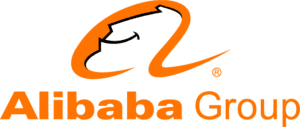 Alibaba Group has made great strides to expand its delivery and logistics network over the last few years. In a recent announcement, the company will spend $3.3 billion to raise its stake in Cainiao, the business that oversees at least a dozen shipping partners for Alibaba. Alibaba will lift its stake in Cainiao to 63 percent from 51 percent by subscribing for newly issued shares in its latest financing round and buying existing stock from another holder. Just last year, Jack Ma said that he wanted to invest $14 billion in logistics without giving a time frame. This certainly looks like a step in the right direction to reach that goal.
Alibaba Group has made great strides to expand its delivery and logistics network over the last few years. In a recent announcement, the company will spend $3.3 billion to raise its stake in Cainiao, the business that oversees at least a dozen shipping partners for Alibaba. Alibaba will lift its stake in Cainiao to 63 percent from 51 percent by subscribing for newly issued shares in its latest financing round and buying existing stock from another holder. Just last year, Jack Ma said that he wanted to invest $14 billion in logistics without giving a time frame. This certainly looks like a step in the right direction to reach that goal.
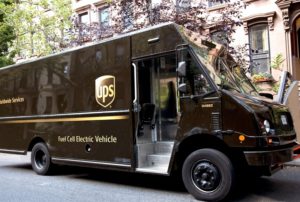 One of the biggest obstacles for profitable last mile deliveries is building parcel density. This means that there are short miles between stops. One to two-hour deliveries destroy the ability of a carrier to consolidate a route. UPS is looking for a creative way to build parcel density. Last week, the company announced that it is offering $35 in rewards for consumers to pick up holiday packages at any one of 15,000 alternate delivery locations across the US, known as “Access Points.” Under the pick-up program, qualifying consumers receive a $15 Target digital gift card and $20 in upgrade credits to the UPS “My Choice” program. UPS My Choice allows business and residential users to manage their delivery schedules, but with a set of limitations and rules. The program will be available until January 12.
One of the biggest obstacles for profitable last mile deliveries is building parcel density. This means that there are short miles between stops. One to two-hour deliveries destroy the ability of a carrier to consolidate a route. UPS is looking for a creative way to build parcel density. Last week, the company announced that it is offering $35 in rewards for consumers to pick up holiday packages at any one of 15,000 alternate delivery locations across the US, known as “Access Points.” Under the pick-up program, qualifying consumers receive a $15 Target digital gift card and $20 in upgrade credits to the UPS “My Choice” program. UPS My Choice allows business and residential users to manage their delivery schedules, but with a set of limitations and rules. The program will be available until January 12.
 Blockchain within the supply chain is clearly old news. But there are always new companies and use cases to write about. UPS has announced a partnership with HerdX for the successful delivery of a blockchain-verified beef shipment from a US farm to Japan. Food and pharmaceutical traceability is clearly the most visible blockchain application within the supply chain, so it is not surprising to see more and more of these pilots pop up. The beef shipment originated from a Kansas farm, and it was put in a UPS temperature-sensitive air freight container that contained sensors that monitored and recorded the shipment’s temperature throughout its journey to Japan. The data from the sensors was fed to HerdX’s blockchain verification platform. After the beef shipment landed in Japan, it was transported to a contemporary steakhouse where invited guests were given a menu that featured beef dishes with QR codes. This is redefining the “farm-to-table” dinner.
Blockchain within the supply chain is clearly old news. But there are always new companies and use cases to write about. UPS has announced a partnership with HerdX for the successful delivery of a blockchain-verified beef shipment from a US farm to Japan. Food and pharmaceutical traceability is clearly the most visible blockchain application within the supply chain, so it is not surprising to see more and more of these pilots pop up. The beef shipment originated from a Kansas farm, and it was put in a UPS temperature-sensitive air freight container that contained sensors that monitored and recorded the shipment’s temperature throughout its journey to Japan. The data from the sensors was fed to HerdX’s blockchain verification platform. After the beef shipment landed in Japan, it was transported to a contemporary steakhouse where invited guests were given a menu that featured beef dishes with QR codes. This is redefining the “farm-to-table” dinner.
 Mobile robots are on the move again. UW-Madison is the latest campus to roll out food delivery robots. Earlier this week, the University announced that it has deployed 30 robots on campus. They were created by Starship Technologies and can deliver from three dining halls. This is just the latest institution where students, faculty, and staff can have meals and snacks delivered by autonomous robots. Through a mobile app, students, faculty, and staff can place their order, indicate where they want it delivered, watch the bot’s journey to that destination, and unlock the container once it arrives. Officials at Starship, which has pledged to expand to 100 campuses within two years, say that UW-Madison is the largest American university to use their services so far.
Mobile robots are on the move again. UW-Madison is the latest campus to roll out food delivery robots. Earlier this week, the University announced that it has deployed 30 robots on campus. They were created by Starship Technologies and can deliver from three dining halls. This is just the latest institution where students, faculty, and staff can have meals and snacks delivered by autonomous robots. Through a mobile app, students, faculty, and staff can place their order, indicate where they want it delivered, watch the bot’s journey to that destination, and unlock the container once it arrives. Officials at Starship, which has pledged to expand to 100 campuses within two years, say that UW-Madison is the largest American university to use their services so far.
 Robots are clearly not just for last mile deliveries either. We have written a number of articles about the role of robotics in the warehouse. Engineers at MIT have announced a new type of robot that can serve the warehouse that is unlike its predecessors. Inspired by the way a plant grows, the robot is designed with a chain-like appendage that extends and can twist and turn in any configuration to access hard-to-reach places. It is also rigid enough to support heavy loads or apply torque to assemble parts. According to MIT engineers:
Robots are clearly not just for last mile deliveries either. We have written a number of articles about the role of robotics in the warehouse. Engineers at MIT have announced a new type of robot that can serve the warehouse that is unlike its predecessors. Inspired by the way a plant grows, the robot is designed with a chain-like appendage that extends and can twist and turn in any configuration to access hard-to-reach places. It is also rigid enough to support heavy loads or apply torque to assemble parts. According to MIT engineers:
“The design mirrors the way plants grow, which involves the transport of nutrients, in a fluidized form, up to the plant’s tip. There, they [nutrients] are converted into solid material to produce, bit by bit, a supportive stem. In a similar way, the flexible robot’s ‘growing point’ is a gearbox that pulls a loose chain of interlocking blocks into the box. Gears in the box then lock the chain units together and feed the chain out, unit by unit, as a rigid appendage.”
 Virtual reality (VR) is gaining a lot of traction today. FedEx is now using the technology for training purposes. According to FedEx’s latest numbers, package handlers who work on FedEx Ground loading docks load and unload 8.5 million packages a day. According to FedEx, the volume and physical nature of loading and unloading that many packages a day takes its toll on employees. As it looked to new training mechanisms, FedEx was not hard pressed for volunteers to test VR training. FedEx Ground initially rolled out VR training in a small pilot. According to Jefferson Welch, human resource director for FedEx Ground University, the division’s training arm, “because trainers were able to track where people in the headsets focused their eyes, they realized that many employees were looking in the wrong place during simulations of loading and unloading packages, which could lead to safety issues. That right there is when we were sold.”
Virtual reality (VR) is gaining a lot of traction today. FedEx is now using the technology for training purposes. According to FedEx’s latest numbers, package handlers who work on FedEx Ground loading docks load and unload 8.5 million packages a day. According to FedEx, the volume and physical nature of loading and unloading that many packages a day takes its toll on employees. As it looked to new training mechanisms, FedEx was not hard pressed for volunteers to test VR training. FedEx Ground initially rolled out VR training in a small pilot. According to Jefferson Welch, human resource director for FedEx Ground University, the division’s training arm, “because trainers were able to track where people in the headsets focused their eyes, they realized that many employees were looking in the wrong place during simulations of loading and unloading packages, which could lead to safety issues. That right there is when we were sold.”
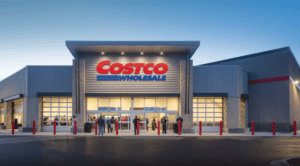 Prescription drug delivery is looking like it could be big business for pharmaceutical chains and crowd-sourced delivery firms. Costco is testing prescription drug delivery via Instacart in California and Washington. Under the test, which is still in its early stages, Costco pharmacy customers can get same-day delivery of prescriptions along with groceries and staple household products, in as little as an hour. There are a few stipulations to the agreement of course. Prescription delivery is free for orders of $35 or more for customers with a Costco or an Instacart membership. But, more importantly, customers ordering prescriptions for delivery must be age 18 or older and enter their birthdate at checkout, as well as present a valid government ID at the time of delivery.
Prescription drug delivery is looking like it could be big business for pharmaceutical chains and crowd-sourced delivery firms. Costco is testing prescription drug delivery via Instacart in California and Washington. Under the test, which is still in its early stages, Costco pharmacy customers can get same-day delivery of prescriptions along with groceries and staple household products, in as little as an hour. There are a few stipulations to the agreement of course. Prescription delivery is free for orders of $35 or more for customers with a Costco or an Instacart membership. But, more importantly, customers ordering prescriptions for delivery must be age 18 or older and enter their birthdate at checkout, as well as present a valid government ID at the time of delivery.
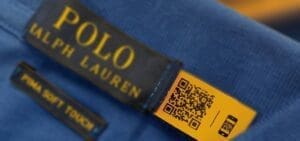 Supply chain visibility is becoming increasingly important. And many companies are taking this thought to heart, with an emphasis on QR-based tracking systems to monitor items through the supply chain. One of those is Ralph Lauren, which says it is the “first global retail brand to apply this type of technology at scale.” The Ralph Lauren QR codes are designed to serve as a mark of authenticity to combat the rise of counterfeits. Beyond counterfeits, the QR-based tracking system will grant Ralph Lauren improved supply chain visibility into supplier-level operations as well as improved overall efficiency.
Supply chain visibility is becoming increasingly important. And many companies are taking this thought to heart, with an emphasis on QR-based tracking systems to monitor items through the supply chain. One of those is Ralph Lauren, which says it is the “first global retail brand to apply this type of technology at scale.” The Ralph Lauren QR codes are designed to serve as a mark of authenticity to combat the rise of counterfeits. Beyond counterfeits, the QR-based tracking system will grant Ralph Lauren improved supply chain visibility into supplier-level operations as well as improved overall efficiency.
That’s all for this week. Enjoy the weekend and the song of the week, Do I Wanna Know? by the Arctic Monkeys.
















